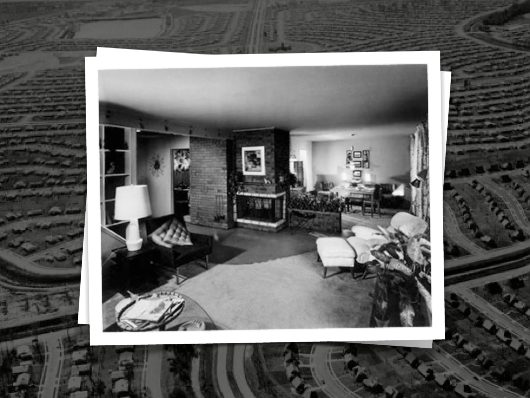Escalante
Image source: Building the Suburban Dream.
This is the inside of one of the models.
Here’s the thing: The houses were built unfinished. They had space on the side to build a garage later. The ground floor was the only one delivered finished. There was space for a first floor, but it was left as an attic, and the stairs were incomplete and ran up to a blank wall.
When people took possession of the homes, it was common to extend them gradually over the years: a new garage, an extension on the side, an attic conversion to a new bedroom, extending the roof to make the attic room bigger.
What I like about this is it understands design is a continued adaptation, a negotiation between the designers and the user or resident, and it happens continuously. The blank wall and the space on the wall – at the top of the stairs – they’re invitations for the resident to get involved in the design. You know, you’d sit there watching TV and look at your stairs and think, Hey, I could do something with that. It’s as if they built the house with screws and not nails.
Very clever. The Web should work more like this.
Really Stewart Brand’s layers are a model for change of all kinds. Deep structural change happens piecemeal over long periods of time, without us even noticing. Sometimes when we think we’re making a change, all we’re doing is shifting the furniture around. When you want to examine lasting change, you have to look over long time periods, decades.
